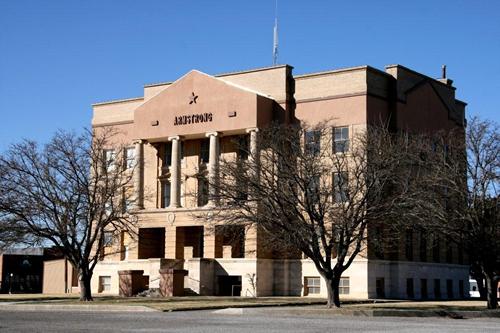Claude, Texas, Armstrong County seat. (original) (raw)
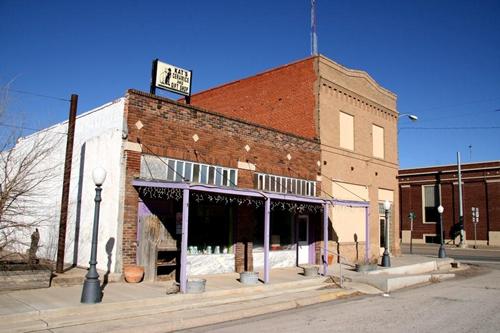
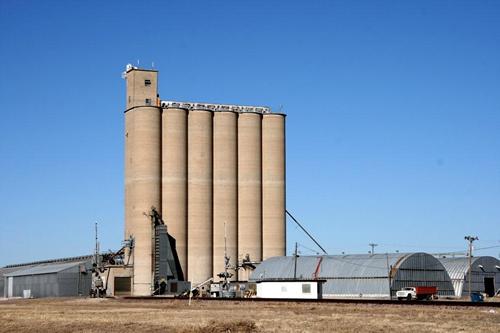
History in a Pecan ShellClaude Ayers, railroad engineer for the Fort Worth and Denver City Railway had the town of Armstrong City renamed in his honor when he drove the first train to town in 1887.
The town's business district was originally platted along the railroad tracks with angles southeast to northwest, while later building was platted on the traditional compass points.
A post office was granted in 1888 and the county was organized in 1890.
A dispute with the town of Washburn (13 miles NW) called for an election with cattleman Charles Goodnight (who lived East of Claude) supposedly casting the tie-breaking vote. The largest hotel in the Panhandle, a three-story model named the Palace opened and Claude organized their own school district in 1891.
Claude's citizens reportedly used a trough on the courthouse square for their water and a stone courthouse was built in 1912.
Claude claims to have had the first Boy Scout Troop (17) west of the Mississippi and to date, no one has stepped forward to challenge that claim.
The population was just over 1,000 in 1930 and it fell to 761 by 1940.
A new Armstrong County jail was built from the stone of the former jail in 1951.
Claude served as the backdrop for the movie Hud in 1963, and several others films.
The current population has increased back to a comfortable 1,300.See "Town of Claude" Historical Marker
Claude, Texas
Landmarks/Attractions

Armstrong County Jail
On US 287, one block west of the Courthouse Square
Photo courtesy Stephen Michaels, January 2008
More Texas Jails
Historical Marker
Armstrong County Jail
Erected in 1953, this building is constructed of stone used to build the first masonry jail in Armstrong County, 1894. Stone for the structure (which replaced a primitive, frame "calaboose") was quarried 14 miles south at Dripping Springs in Palo Duro Canyon and then hauled here in wagons driven by local citizens. The rock was cut at this site. The 1894 building had two stories, topped by a dome, and 20-inch walls. So sturdy was it that dangerous convicts from other counties were kept here. Old-timers remember that only three prisoners ever escaped.
(1969)
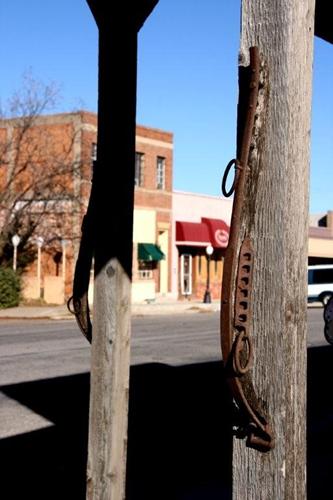
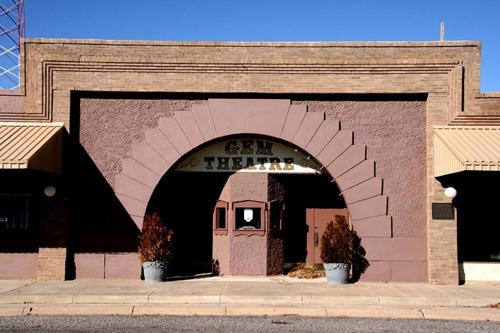









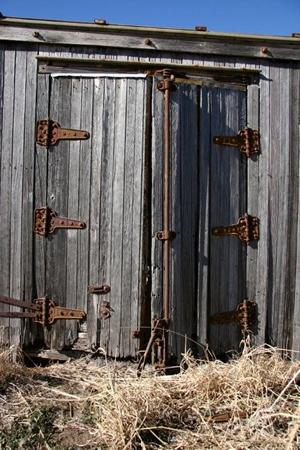
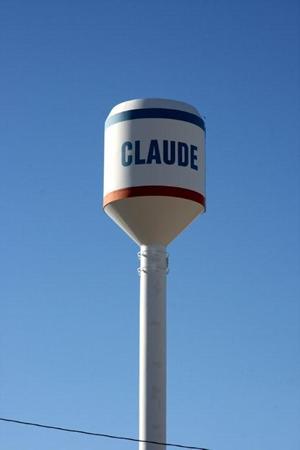

Historical Marker Town of ClaudeFounded when Fort Worth & Denver Railroad built into area (1887). Claude Ayers, engineer on first passenger train through here, suggested town be named for him -- and citizens agreed.
Jerry Cavanaugh, first resident, gave land for town. Post office was granted in 1888, with E.H. Trice, postmaster. Claude won a close race for county seat, 1890. Tie-breaking vote was cast by famous rancher Chas. Goodnight.
Churches were established in 1890 and a school built in 1891. Noted Panhandle historian Laura V. Hamner was an early teacher. Town was incorporated in 1909.
(1971)
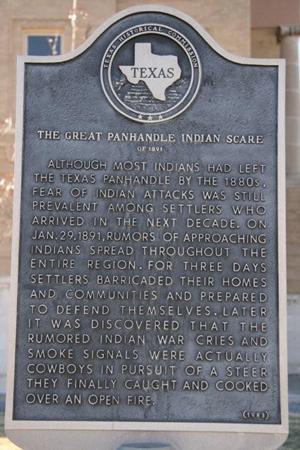
The Great Panhandle Indian Scare
historical marker
Photo courtesy Stephen Michaels, January 2008
Historical Marker
The Great Panhandle Indian Scare
of 1891
Although most Indians had left the Texas Panhandle by the 1880s, fear of Indian attacks was still prevalent among settlers who arrived in the next decade. On Jan. 29, 1891, rumors of approaching Indians spread throughout the entire region. For three days settlers barricaded their homes and communities and prepared to defend themselves. Later it was discovered that the rumored Indian war cries and smoke signals were actually cowboys in pursuit of a steer they finally caught and cooked over an open fire.
(1983)
Historical Marker in Courthouse Square, US 287)
Route of Coronado Expedition
Led by Francisco Vazquez de Coronado, this trail-blazing expedition set out from Mexico City in 1541 in search of Cibola, fabled 7 Cities of Gold. Finding only Indian pueblos, Coronado changed his course for Quivira, a supposedly wealthy Indian kingdom. This quest brought the entourage across the Panhandle plains to present Tule Canyon. Then with 30 men, Coronado went north by "Needle Point" -- a route taking in Palo Duro Canyon and present Armstrong County, via Claude. He next continued into Kansas, but failing to find riches, returned to Mexico in 1542.
(1969)
See Coronado�s Search for Cibola by Jeffery Robenalt
Historical Marker
Claude Cemetery
(Established 1890)
Dan Cavanagh settled here in 1885 and bought this land in 1888. In 1890 he gave a grave site for railroad worker Neal DeBerry. Settler C.C. Bates was buried in 1890, and early burials from the Fort Worth & Denver Railroad right-of-way were later moved here. James and Harriet Grimes deeded the cemetery land to the public in 1905. A cemetery association was organized in 1912, and perpetual care began in 1936 with a $10,000 gift from Jim Hill. Also interred here are veterans of the Civil War, the Spanish American War, World Wars I and II, Korea, and Vietnam.
(1973, 1990)
Claude, Texas Chronicles
Blackie the Bear by Mike Cox
Nickels were hard to come by in the tough economic times of the early 1890s, but the cowboys patronizing Jim Scarborough�s saloon in Claude never minded standing Blackie a drink when they could afford to...

Texas Escapes, in its purpose to preserve historic, endangered and vanishing Texas, asks that anyone wishing to share their local history, stories, landmarks and recent or vintage photos, please contact us.
